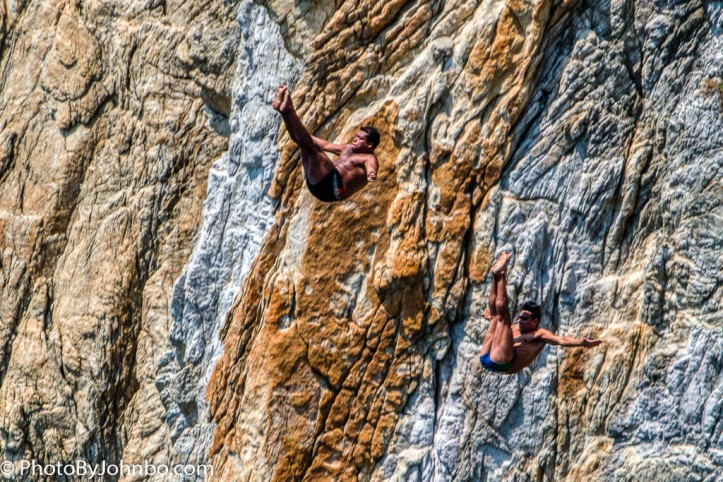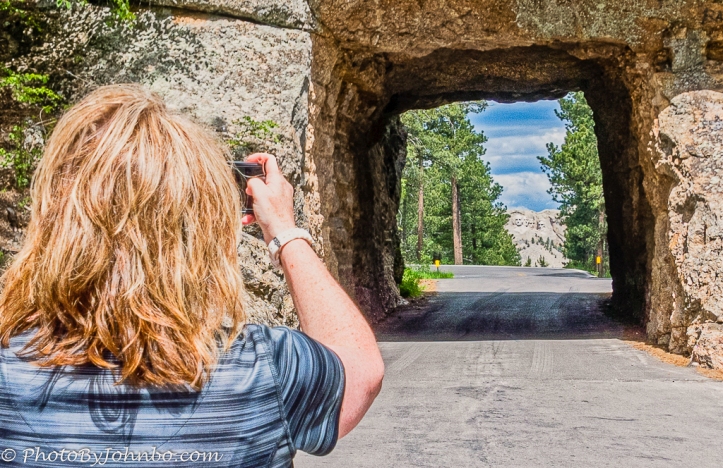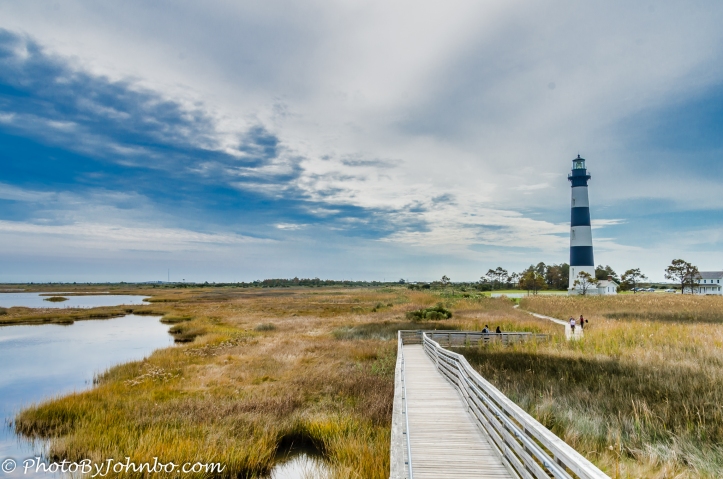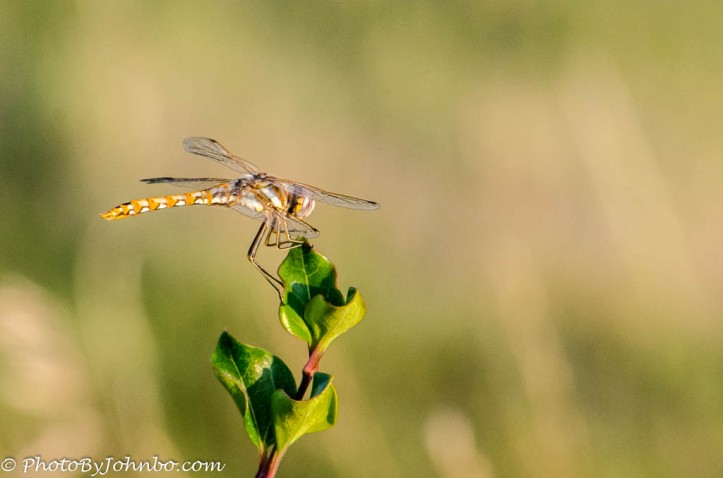This week, Patti Moed challenges us to show some techniques for ensuring the viewer finds and focuses their eyes on the subject in your photos. She writes, “In this week’s Lens-Artists Photo Challenge #121: Focus on the Subject, we invite you show us an image that uses leading lines, patterns, color, contrast, selective focus, freezing the action, doorways or arches, or the eyes of humans or animals to draw our attention to the subject.” You can read her entire challenge post here.
In my opening photo, I am sharing one of my favorite action photos, an image of a dragster on a quarter-mile run. By setting the shutter speed to a relatively slow 1/160 of a second and panning the camera to follow the action, the subject stays relatively sharp while the background blurs due to the camera motion.
Setting the shutter speed to a much higher speed allows the subject to be frozen in time as in this example of two cliff divers in Acapulco.
This image has two subjects, the first is the lady who is obviously taking a photograph. The real subject, however, is framed by the tunnel. In the distant background is Mount Rushmore. You will find the subject easier to see if you select the image to enlarge it (if your browser supports that function.)
The use of leading lines in an image can help the viewer’s eyes to be drawn into the image. The subject is the Bodie Island Lighthouse on the Outer Banks of North Carolina.
Another example of leading lines is an image of the Napali Coast on the island of Kauai, Hawaii. Following the lines of the beach or of the waves breaking on the shore leads the viewers eyes to a couple walking the beach.
The color of a subject can be an easy focal point, but sometimes extra emphasis adds a unique quality to the image. The four oranges hanging on the tree are certainly enough different in color from the background that they are easily identifiable as the subject. Just for fun, I used some post-processing tools to mute the rest of the colors in the image leaving the oranges to stand out in an otherwise almost black-and-white image.
For my final image, I feature a dragonfly on a leaf. Selective focus is another way to ensure the viewer is not distracted from your subject by extraneous objects in the image. Using a large lens opening helps to blur the background.
Thanks again to Patti for the tutorial she presented for this challenge. It reminded me of methods I’d used in the past to make the subject stand out, and mentioned a couple of things I can try in the future.
John Steiner







Excellent as usual, John! Love the panning and the lady photographer especially – and phew…for the divers…
Thank you! Fun challenge this week (but truth be told, I love them all, and can’t wait for the next one. >grin<)
Big smile from me! ;-D
LOL for your response to Ann-Christine John 😊. Terrific examples as always. Loved your pan, which is a very challenging technique that you’ve clearly mastered. And your image of Mt Rushmore is very cleverly done. Great job!
Thanks for your kind compliments. It’s been a long time since I’ve been at a venue where I could practice the panning techniques. I’m sure I am rusty at it.
Great series, John. The panning shot and the diver capture are incredible. Lovely Napali Coast!
Thanks! As I commented to Tina, I need to find someplace to practice more panning shots.
Excellent examples John. I like them all. Well done.
Thanks!
Your lead shot is definitely WOW! I so adore your photos this week. 😀
Coming from you, that’s a powerful compliment. Thanks!
Fabulous series, John. Great shots and wonderful examples of how you can compose the shot to lead our eyes to the subject.
Thanks much, and thanks for a great challenge!
Great post! very good examples.
Thanks!
Wonderful selection, John. The introductory image is superb.
Thank you!
The photo of the moving racing car is amazing. It is hard to focus on any objecting moving so fast.
Thanks. It was a challenge to get it so sharp.